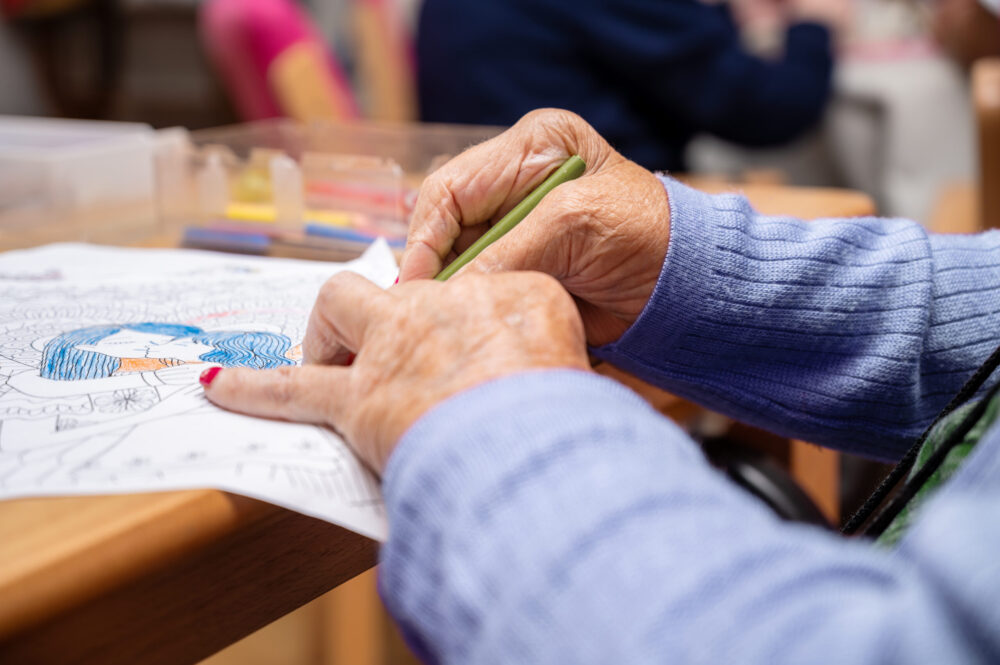
Complementary Therapies for Hospice Patients
Published
August 6, 2024Individuals may seek alternative approaches that prioritize comfort, well-being and dignity for a loved one on hospice care. Complementary and alternative therapies can offer additional interventions that complement conventional medical treatments, addressing not only physical symptoms but also emotional and spiritual needs.
What are Complementary and Alternative Therapies?
Both complementary and alternative therapies are forms of medical treatment that exist outside of conventional medicine, but they both have distinct differences.
- Complementary therapy is used alongside conventional medicine.
- Alternative therapy is used instead of medical treatment.
Examples of Complementary and Alternative Therapies
Some examples of complementary and alternative therapies may be:
- Acupuncture/Acupressure – Acupressure involves applying pressure to specific points on the body. Acupuncture involves the insertion of thin needles into specific points to stimulate nerve endings and release natural pain-relieving chemicals.
- Aromatherapy – Aromatherapy involves the use of essential oils derived from plants which may help promote physical or emotional well-being through inhalation, topical application or diffusing.
- Art Therapy – Art therapy uses creative expression through art-making to promote self-expression and healing.
- Chiropractic and Osteopathic Manipulations – Chiropractic and osteopathic manipulations involve adjustments of the spine and musculoskeletal systems to help alleviate pain.
- Deep Breathing/Relaxation Techniques – Deep breathing techniques involve certain breathing patterns to help promote relaxation or reduce stress.
- Guided Imagery – Guided imagery involves visualization and mental imagery to promote relaxation and overall well-being.
- Meditation – Meditation is the practice of mindfulness including deep breathing or visualization to help promote stress relief and mental clarity.
- Yoga – Yoga involves a combination of physical postures and movements coupled with deep breathing or meditation to promote relaxation.
Therapies covered by St. Croix Hospice may include:
- Massage Therapy – Our certified massage therapists offer a hands-on approach involving manipulation of the soft tissues of the body to promote pain relief and relaxation.
- Music Therapy – Music therapy is provided by our certified music therapists who perform music with personal meaning to provide peace, relaxation and joy.
- Pet Therapy – Pet therapy involves interaction with trained therapy animals and their volunteer handlers to provide emotional support and improve overall well-being.
What Symptoms Can Complementary and Alternative Therapies Help?
Complementary and alternative therapies can help with the following symptoms:
- Pain Management – Acupuncture, massage therapy and aromatherapy can help manage pain.
- Anxiety and Stress – Mind-body practices such as meditation or yoga may help reduce anxiety and stress.
- Nausea and Digestive Discomfort – Aromatherapy may help with nausea. Certain acupressure points are also known to help relieve nausea or discomfort.
- Difficulty Breathing or Cough – Breathing exercises may improve lung function and reduce feelings of breathlessness. Aromatherapy may help clear congestion, soothe airways and promote relaxation.
- Insomnia – Meditation or aromatherapy may promote relaxation and help with insomnia.
Benefits of Complementary and Alternative Therapies in Hospice Care
Complementary and alternative therapies offer many benefits to hospice care patients, encompassing additional physical, emotional and spiritual support. These additional therapies can help support various areas of well-being at the end-of-life.
Complementary and alternative therapies can provide significant physical benefits to hospice care patients, including pain relief, symptom management, range of motion and improved comfort.
These additional therapies can offer valuable emotional support to hospice care patients, helping them navigate feelings of anxiety, stress and grief. They can also address the spiritual needs and existential concerns of hospice care patients.
Frequently Asked Questions
Are complementary and alternative therapies safe?
When utilized by certified practitioners, complementary and alternative therapies can be safe and beneficial for patients on hospice care. Specific requirements ensure that practitioners have received appropriate training and adhere to professional standards and prioritize patient safety.
Can these therapies reduce pain or the need for medication?
Complementary and alternative therapies can reduce pain, anxiety and potentially the need for medication in certain cases, although their effectiveness can vary depending on individual circumstances and conditions.
How are family members and caregivers involved in these therapies?
Family members and caregivers play integral roles in supporting patients on hospice and often participate in complementary and alternative therapies alongside their loved one. Their involvement can vary depending on the type of therapy and the patient’s preferences. When it comes to things like music for example, family members can provide valuable insight into specific songs or genres that are well loved by the patient or may bring back happy memories.
What additional therapies are covered by hospice care?
St. Croix Hospice provides massage therapy, music therapy and pet therapy volunteers when applicable to a patient’s care plan. Every hospice is different in what they may offer, so be sure to check with your individual care team. Additional therapies covered can also be dependent on a patient’s individualized care plan.

